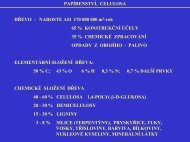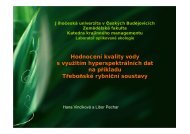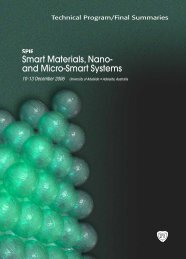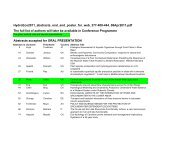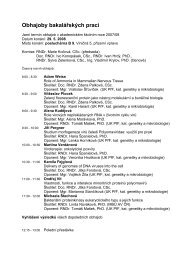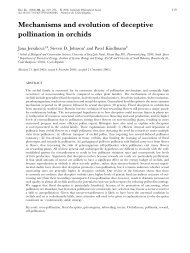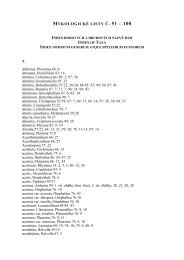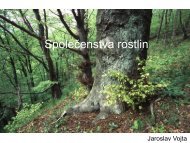Spatial distribution of phytoplankton in the eastern part of the North ...
Spatial distribution of phytoplankton in the eastern part of the North ...
Spatial distribution of phytoplankton in the eastern part of the North ...
- No tags were found...
Create successful ePaper yourself
Turn your PDF publications into a flip-book with our unique Google optimized e-Paper software.
was represented by 6 species, with <strong>the</strong>most common species, be<strong>in</strong>g Nitzschialongissima and N. constricta. Along<strong>the</strong> transect, dist<strong>in</strong>ct changes <strong>in</strong>Nitzschia abundance was observed.Whereas all species were observed <strong>in</strong><strong>the</strong> western <strong>part</strong>, only N. longissimaoccurred on <strong>the</strong> <strong>eastern</strong> side <strong>of</strong> <strong>the</strong>transect (Fig. 10).Figure 10. <strong>Spatial</strong> variation <strong>in</strong> <strong>the</strong> relative abundance‣ D<strong>in</strong>ophyceae – A total <strong>of</strong> 44 <strong>of</strong> Nitzschia species.different species <strong>of</strong> d<strong>in</strong><strong>of</strong>lagellates were found <strong>in</strong> <strong>the</strong> transect. The most abundant species wereAlexandrium tamarense <strong>in</strong> <strong>the</strong> western <strong>part</strong>, Protoperid<strong>in</strong>ium achromaticum and Diplopelta bomba<strong>in</strong> <strong>the</strong> <strong>eastern</strong> <strong>part</strong>, and Pentapharsod<strong>in</strong>ium dalei at all stations along <strong>the</strong> transect with maximumabundance <strong>in</strong> <strong>the</strong> central area. At all stations, M<strong>in</strong>uscula bipes, Protoperid<strong>in</strong>ium pellucidum andZygabikod<strong>in</strong>ium lenticulatum occurred <strong>in</strong> relatively constant abundance.Most <strong>of</strong> <strong>the</strong> d<strong>in</strong><strong>of</strong>lagellate species found belong to <strong>the</strong> <strong>the</strong>cate genera Ceratium andProtoperid<strong>in</strong>ium (only 5 a<strong>the</strong>cate species were found). In total, 7 species <strong>of</strong> Ceratium occurred <strong>in</strong><strong>the</strong> transect, with a dist<strong>in</strong>ct gradient <strong>of</strong> abundance. All 7 species were found <strong>in</strong> <strong>the</strong> central area,while no species <strong>of</strong> this genus were found at two stations <strong>in</strong> <strong>the</strong> western <strong>part</strong> <strong>of</strong> <strong>the</strong> transect (Fig.11). A similar decrease <strong>in</strong> number <strong>of</strong> species was noted <strong>in</strong> <strong>the</strong> <strong>eastern</strong> end <strong>of</strong> transect, where only 2species occurred.With 17 species found, <strong>the</strong> genusProtoperid<strong>in</strong>ium was <strong>the</strong> richest genus<strong>of</strong> algae, and was found throughout <strong>the</strong>transect. P. achromaticum, <strong>the</strong> mostnumerous species, was very abundantat stations 143 and 145, located near<strong>the</strong> coast. After Thalassionemanitzschioides, P. achromaticum was Figure 11. <strong>Spatial</strong> variation <strong>in</strong> <strong>the</strong> relative abundance<strong>of</strong> Ceratium species.<strong>the</strong> second most dom<strong>in</strong>ant alga <strong>in</strong><strong>the</strong>se samples. However, <strong>the</strong>re were no cells found at <strong>the</strong> western end <strong>of</strong> <strong>the</strong> transect. Interest<strong>in</strong>gly,only P. pellucidum occurred at all stations along <strong>the</strong> transect. All o<strong>the</strong>r species appeared ei<strong>the</strong>r <strong>in</strong>14




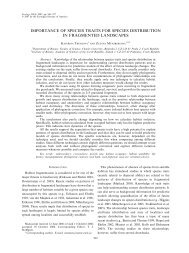
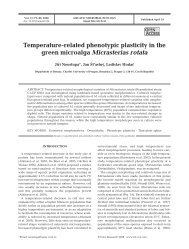
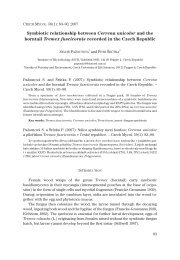
![[Cr(urea)6]Cl3](https://img.yumpu.com/47220263/1/184x260/crurea6cl3.jpg?quality=85)
